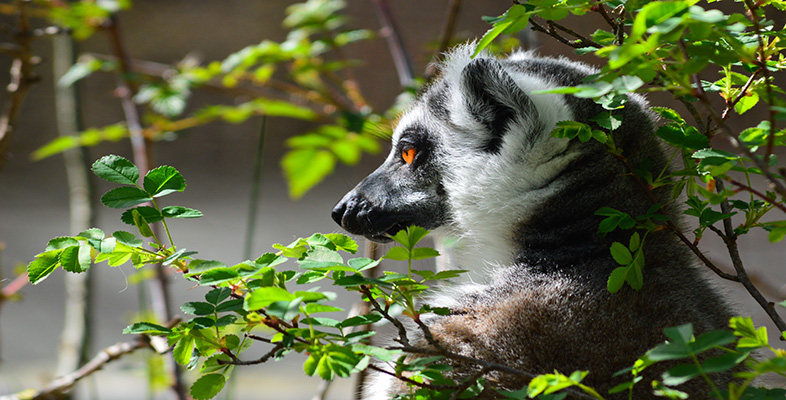5.3 Sportive lemurs
Sportive lemurs are curiously named - they are amongst the least active of primates and their metabolism is about 50 per cent lower than would be expected in an animal of their size. Rather, their naming is said to reflect the position they adopt in defence, which resembles that of a boxer! They are nocturnal, largely solitary animals, very seldom venturing onto the ground. Members of the same sex defend territory against each other, in part using loud vocalisations, mixed with threat displays and chasing.
Question 9
Sportive lemurs are leaf eaters. What anatomical and physiological features would you expect as adaptations to such a diet?
Answer
You might expect an elongated large intestine (which is indeed the case) and a distinctive bacterial population to help digest the cellulose contained in the leaves.
The current distribution of the seven known species of sportive lemurs is shown in Figure 6b. The fact that some have geographical ranges that are so limited, often corresponding with the pattern of distribution of primary vegetation (shown in Figure 6a), reflects the vulnerability of these animals. In favoured locations, they occur in high population densities but they are still extensively hunted by humans; little is understood about many aspects of their biology.
